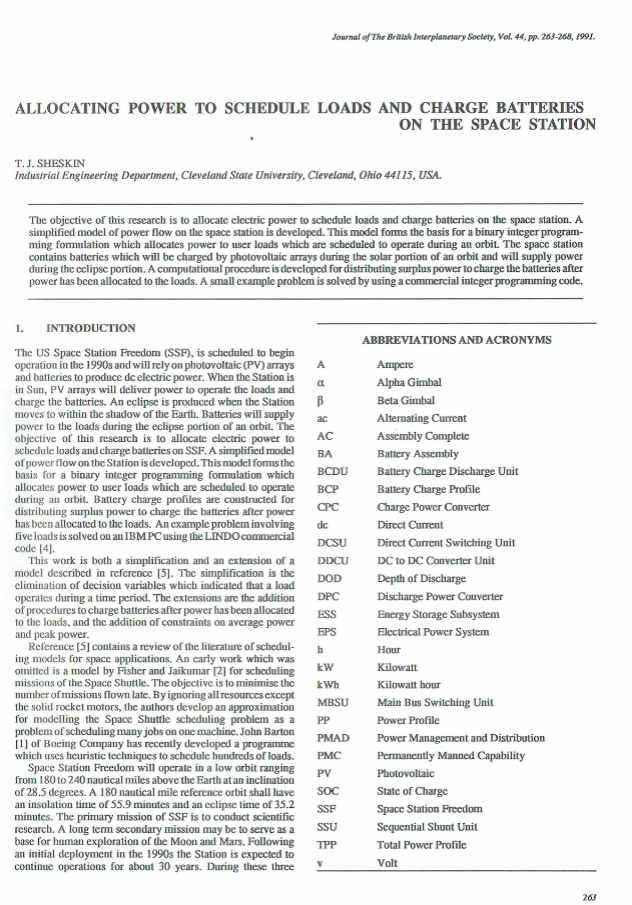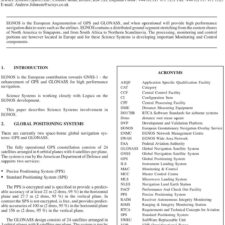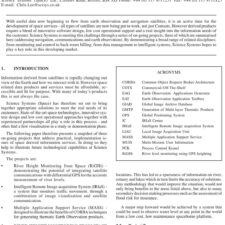Allocating Power To Schedule Loads And Charge Batteries On The Space Station
£5.00
T. J. Sheskin. (1991), JBIS, 44. pp.263-268
Refcode: 1991.44.263
Abstract:
The US Space Station Freedom (SSF), is scheduled to begin operation in the 1990s and will rely on photovoltaic (PV) arrays and batteries to produce de electric power. When the Station is in Sun, PV arrays will deliver power to operate the loads and charge the batteries. An eclipse is produced when the Station moves to within the shadow of the Earth. Batteries will supply power to the loads during the eclipse portion of an orbit. The objective of this research is to allocate electric power to schedule loads and charge batteries on SSF. A simplified model of power flow on the Station is developed. This model forms the basis for a binary integer programming formulation which allocates power to user loads which are scheduled to operate during an orbit. Battery charge profiles are constructed for distributing surplus power to charge the batteries after power has been allocated to the loads. An example problem involving five loads is solved on an IBM PC using the LINDO commercial code [4].





